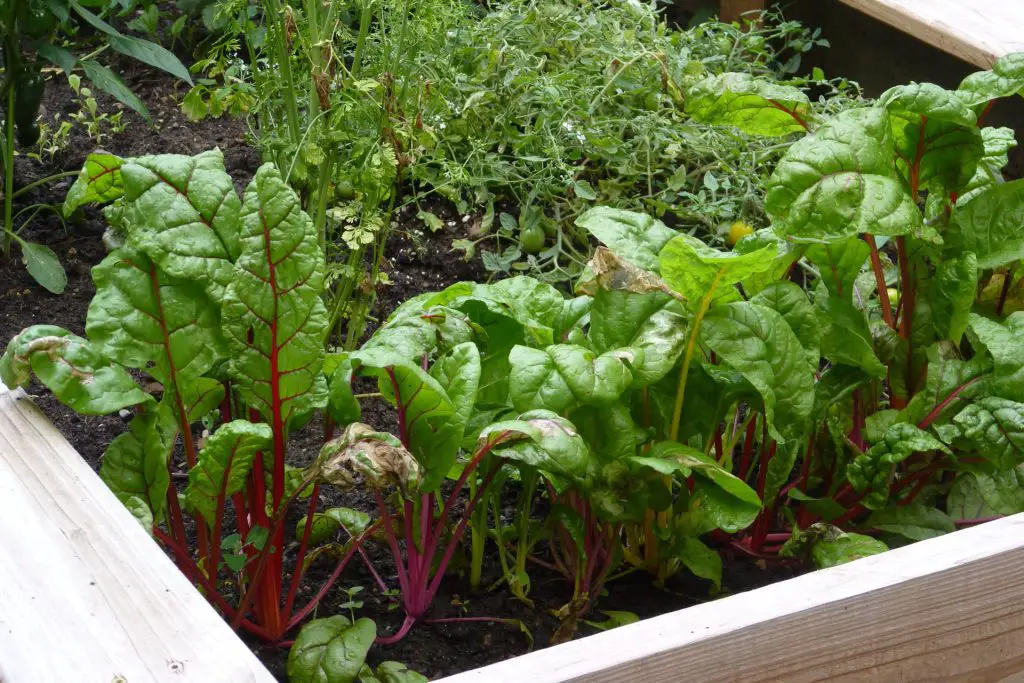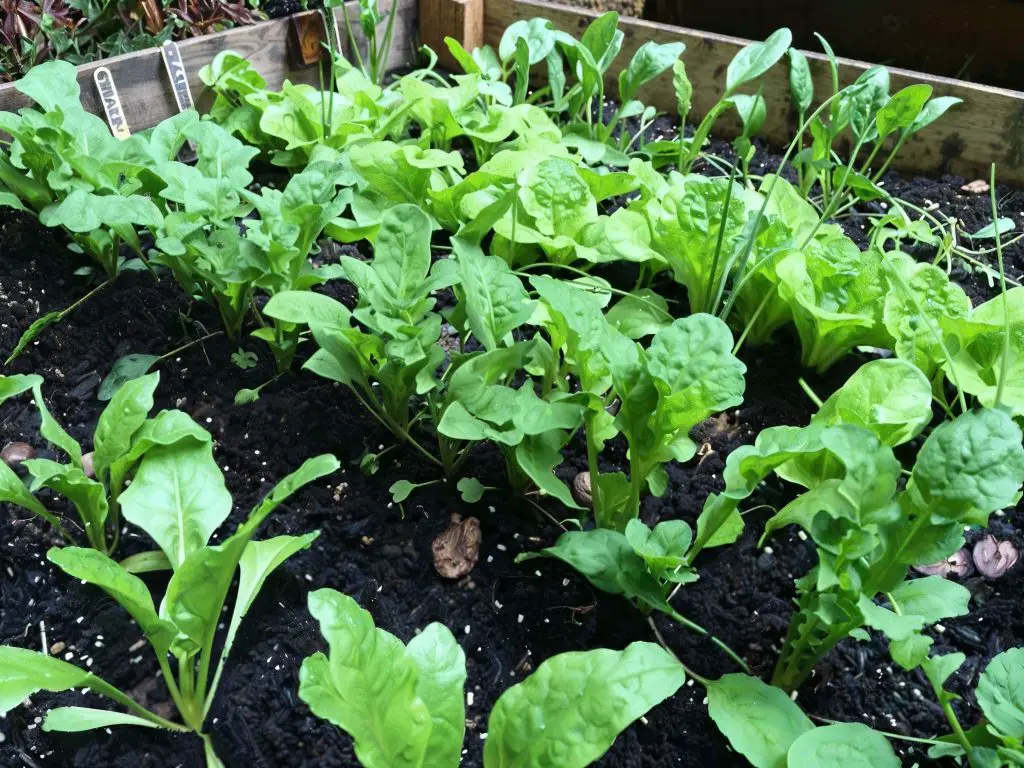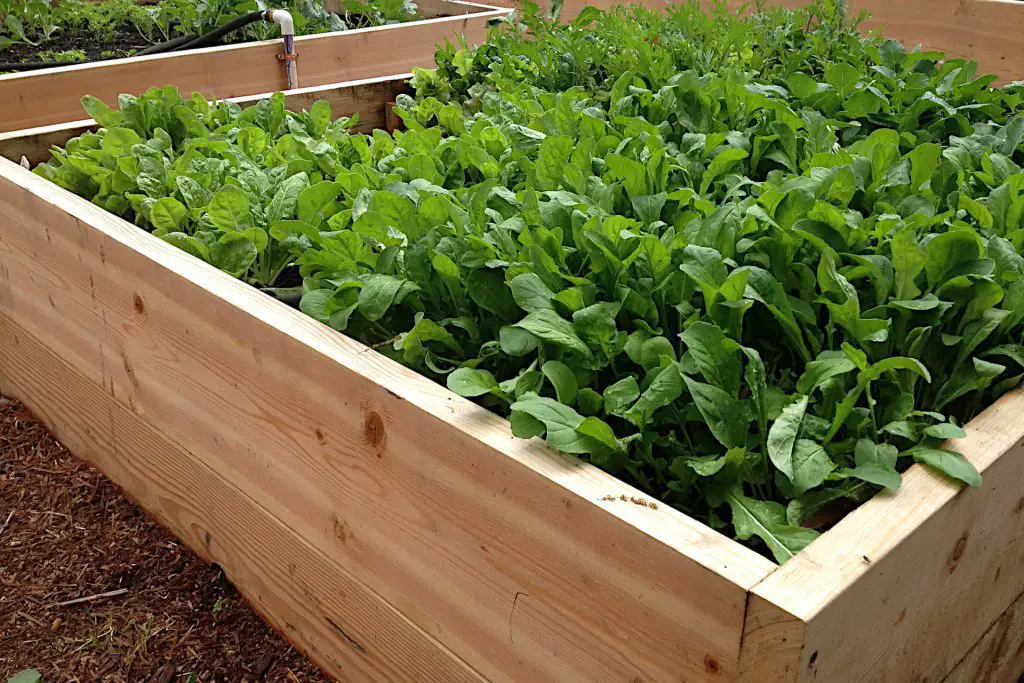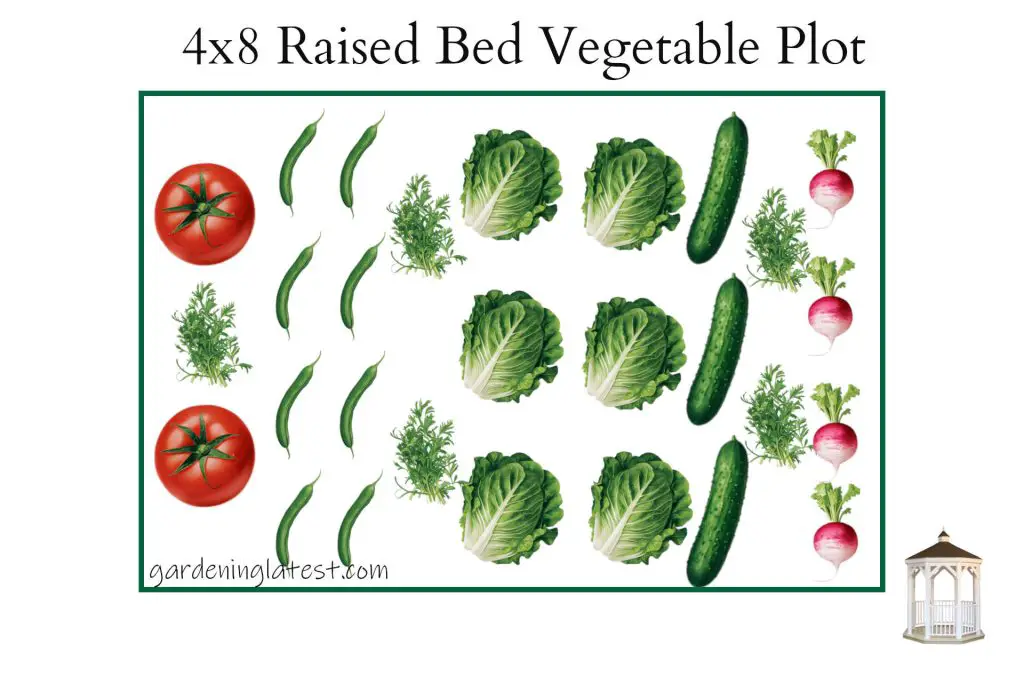4×8 Raised Bed Layout Ideas for a Vegetable Garden
Ever bitten into a juicy, homegrown tomato that bursts with flavor unlike anything you’ve ever tasted at the store? Or enjoyed a crisp salad made with lettuce you nurtured from seed to harvest? There’s a special kind of satisfaction that comes from growing your own vegetables.
But maybe you’ve hesitated to start your own garden because of worries about soil quality, limited space, or back-breaking work. Well, fret no more! Raised beds offer a fantastic solution for beginner and experienced gardeners alike.
They provide a clean slate for creating a thriving vegetable haven, right in your own backyard. So, grab your gardening gloves, get ready to unleash your inner green thumb, and let’s explore some exciting ideas for your very own 4×8 raised bed vegetable garden!
Why Raised Beds Are Great for Growing Veggies

Traditional vegetable gardens can be tricky. Maybe your existing soil is less than ideal, lacking nutrients or prone to drainage problems. Perhaps your backyard space is limited, making it difficult to carve out a dedicated growing area. Or maybe the thought of constant bending and weeding leaves your back feeling achy before you even start.
Raised beds come to the rescue on all fronts! Here’s how:
- Supercharge Your Soil: Unlike traditional gardens where you’re stuck with what you’ve got, raised beds allow you complete control over the soil quality. You can fill them with a custom mix of nutrient-rich compost, organic matter, and everything your chosen vegetables need to thrive.
- Choosing to Grow in a Raised Bed: Uneven ground or poor drainage in your backyard? No problem! Raised beds create a neat and manageable growing area, regardless of your existing landscape.
- Back-Friendly Bonus: The raised height of the bed is a big win for your back. No more crouching or straining to reach your precious plants. You can tend to your garden comfortably and enjoy the process even more.
Deciding Your What to Grow

Before we look at the ‘nitty-gritty’ of planting your raised bed, we have to think about the type of vegetables that you want to grow! Here are some key factors to consider when choosing your champion crops:
- Know Your Zone: Every region has its own unique climate. By understanding your USDA Plant Hardiness Zone, you can select vegetables that are best suited to your specific growing conditions and ensure their success. There are plenty of resources online and at garden centers to help you identify your zone.
- Pick Your Favorites: This is your garden, so prioritize vegetables you and your family love to eat! Fresh, homegrown produce adds a whole new level of flavor and satisfaction to your meals.
- Sun Exposure Matters: Different vegetables have varying sunlight requirements. Some thrive in full sun, while others prefer a bit of afternoon shade. Understanding these needs will help you position your plants for optimal growth.
- Think About Harvest Time: To enjoy a continuous harvest throughout the season, consider staggering your planting dates. Plant vegetables with faster maturity times alongside slower-growing ones. This way, you’ll have a steady stream of fresh produce from your raised bed.
Spacing it Out: Room to Breathe
Now that you’ve chosen your vegetables, let’s talk about giving them the space they need to thrive. Crowding your plants is a recipe for stunted growth, poor air circulation, and even increased risk of disease.
Here’s how to ensure your plants have ample room to breathe:
- Seed Packet Secrets: Those little seed packets you buy aren’t just pretty pictures! They contain valuable information, including the recommended spacing for each vegetable variety. It’s a planting guide you don’t want to ignore.
- Think Like a Plant: Imagine yourself needing enough space for good air circulation and sunshine. That’s exactly what your plants need too! Proper spacing allows air to flow freely around the leaves, reducing the chance of moisture-related diseases.
- Less is More: When in doubt, start with a little less planting than you might think you need. Remember, you can always add more plants later if there’s extra space. It’s always better to err on the side of caution and avoid overcrowding your raised bed.
Succession Planting: Maximize Your Harvest

Imagine getting two, or even three, harvests out of your raised bed in a single season! That’s the magic of succession planting. It’s a strategy that allows you to maximize your harvest throughout the growing season, squeezing every inch of productivity out of your precious 4×8 feet of space.
Here’s how it works:
- Harvesting Your Veggies Certain vegetables, like radishes or lettuce, mature quickly. These become your “harvesting heroes” in succession planting. You can plant them early in the season, enjoy a speedy harvest, then clear the space for slower-growing vegetables like tomatoes or peppers.
- Planting in Stages: Think of your raised bed like a stage. The first act features your fast-growing vegetables. Once they’re harvested, it’s time for the second act with slower-growing plants to take center stage. This staged approach allows you to keep your raised bed constantly producing throughout the season.
- Embrace the Cycle: Succession planting is all about planning and scheduling. By experimenting with planting dates and choosing the right combinations of fast and slow-growing vegetables, you can turn your raised bed into a continuous harvest machine!
Tips for Your Winning Raised Bed Plan
Now that you’re armed with knowledge about choosing vegetables, spacing them correctly, and maximizing your harvest with succession planting, let’s get down to the fun part: creating your winning raised bed garden plan! Here are some handy tips to guide you:
- Sketch it Out: Before you grab your shovel and seedlings, take a moment to sketch a simple diagram of your raised bed. This will help you visualize the layout, ensuring proper spacing for each vegetable variety.
- Label it Up: Keep things organized by labeling your plants with their names and planting dates. This will make it easy to identify everything at a glance and track their growth progress.
- Be a Companion Planting Champion: While we haven’t delved deep into companion planting yet, it’s a fantastic strategy for promoting a healthy and thriving ecosystem in your raised bed. Certain plants can benefit each other in various ways. There are many resources available online and at garden centers to help you explore the fascinating world of companion planting.
Suggested Layout for 4×8 Raised Bed Vegetable Plot
As we have seen much about what you will grow will depend on your climate and personal preferences. Below, I have provided you with detailed instructions and schematic for my own personal favourite 4×8 vegetable plot layout for my raised beds.
Raised Bed Vegetable Plot Layout Details
This layout prioritizes vegetables that mature in early summer, with options for succession planting throughout the season. Remember to adjust planting dates based on your specific growing zone. This is a north-south oriented bed, so keep that in mind when placing your plants.
Key:
- T = Tomato
- P = Pepper (Optional)
- B = Bush Bean
- L = Lettuce (mix of varieties)
- C = Cucumber
- R = Radish
- H = Herb (choose your favorite!)

North Side (Tallest Plants):
- Row 1 (single row): 2 T (stake or cage each) – Tomatoes need good sun exposure, so place them on the north side where they won’t shade other plants.
Center Rows:
- Row 2 (double row): B – Plant bush beans in a double row for maximum yield. These are fast-growing and can be replanted for a fall harvest.
- Row 3 (double row): L – Mixed lettuce provides a variety of textures and flavors, and you can harvest individual leaves as needed. Plant a new batch of lettuce seeds every few weeks for a continuous supply.
South Side (Shortest Plants):
- Row 4 (single row): C (trellis recommended) – Train your cucumber plant up a trellis to save space and keep fruits off the ground.
- Row 5 (double row): R – Radishes are a cool-season crop that matures quickly. You can harvest them early to make space for other vegetables later in the season.
- Scattered amongst other plants: H – Herbs like parsley, basil, or oregano can be tucked in between other vegetables. Choose herbs you use frequently.
Succession Planting:
- Once the radish and lettuce are harvested, you can plant another round of seeds for a fall harvest.
- Bush beans can be replanted every 4-6 weeks throughout the summer for a continuous supply.
- Consider planting a cover crop like clover or buckwheat after the main harvest to replenish nutrients in the soil over winter.
Additional Tips:
- Rotate your crops each year to prevent pest and disease problems.
- Consider companion planting to attract beneficial insects and deter pests.
- Use organic methods whenever possible to create a healthy and sustainable garden.
Small Raised Beds: Two 4×4 Raised Bed Vegetable Plot
If you are cramped for room and need to move around your raised beds more easily then you can look to construct two 4×4 raised beds for vegetable plot and link them with an arch on which you can grow and start introducing a greater element of vertical gardening.

Transforming a garden arch into a vertical vegetable garden not only maximizes space but also adds a stunning visual element to your garden. Here are some vegetables that excel at climbing and can adorn an arch beautifully:
- Cucumbers: Fast growers and heavy yielders, cucumbers use tendrils to climb and can cover an arch quickly during the warm months.
- Pole Beans: Available in many varieties, these beans climb effortlessly and produce a bountiful harvest. Their decorative pods can range from green to vibrant purple, adding a splash of color.
- Peas: Ideal for cooler weather, peas climb using thin tendrils. Both snow peas and snap peas offer a delightful aesthetic and tasty pods.
- Squash and Zucchini: Some varieties like the vining squash can climb when supported. They produce large, attractive leaves and striking fruit.
- Small Pumpkins: Certain smaller pumpkin varieties, like ‘Jack Be Little’, can be trained to grow up arches, offering a delightful fall display.
- Tomatoes: Indeterminate tomato varieties continue growing in length throughout the growing season and can be tied up as they grow to cover an arch.
- Sweet Potatoes: Although primarily known for their underground tubers, sweet potato vines can create a lush cover with their ornamental and dense foliage.
When planning to grow vegetables on an arch, consider the weight of the mature plants and ensure your structure can support them. Regular maintenance, such as tying growing vines to the arch and monitoring for pests and diseases, will keep your vertical garden healthy and productive.
Two 4×4 Raised Bed Vegetable Plot
With regards to the layout you can adjust the layout from the 8×4 raised bed above. This can be done in several ways. You can keep the vegetable varieties that we have suggest and either:
Reduce the number of rows so
North Side (Tallest Plants):
- Row 1 (single row): 2 T (stake or cage each) – Tomatoes need good sun exposure, so place them on the north side where they won’t shade other plants.
Center Rows:
- Row 2 (single row): B – Plant bush beans in a double row for maximum yield. These are fast-growing and can be replanted for a fall harvest.
- Row 3 (single row): L – Mixed lettuce provides a variety of textures and flavors, and you can harvest individual leaves as needed. Plant a new batch of lettuce seeds every few weeks for a continuous supply.
South Side (Shortest Plants):
- Row 4 (single row): R – Radishes are a cool-season crop that matures quickly. You can harvest them early to make space for other vegetables later in the season.
- Scattered amongst other plants: H – Herbs like parsley, basil, or oregano can be tucked in between other vegetables. Choose herbs you use frequently.
Arch
- Grow C (using the arch) – Train your cucumber plant up a arch to save even more space and keep fruits off the ground.
